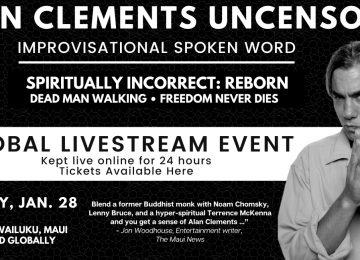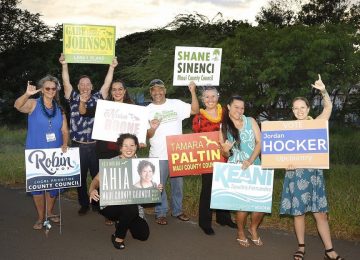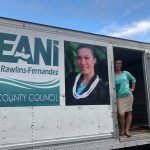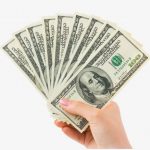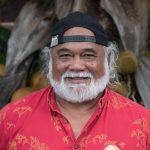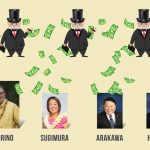We’ve all grown up with the existential threat of nuclear annihilation and more recently the ominous impact of climate change. Now we might be facing a new doomsday scenario: alarmingly unregulated gene-editing technology with the potential to radically and permanently alter the natural world.
“We’re looking at the replacement of nature,” warns Jeffrey Smith, one of the world’s leading environmental activists. “Instead of passing on to future generations what we inherited, the products of billions of year of evolution, we’ll pass on to future generations the products of laboratory experiments that are prone to side effects. And there’s no technology to clean up a gene pool once it is contaminated. That’s a formula for catastrophe.”
Jeffrey Smith is coming to Maui to present a free talk on December 15 at 7 p.m. at the Makawao Union Church on “The New Global Threat from GMOs.”
Smith is traveling the globe to wake the world up to the dangers of this new technology whose risks are being downplayed or ignored by the profit-hungry biotech industry and colluding government agencies.
“It’s an unregulated, wild-west ‘gene rush’ and it’s already happening,” says Smith, the author of the best-selling “Seeds of Deception.” “The replacement of nature with corrupted DNA is upon us. We may lose the natural world we cherish.”
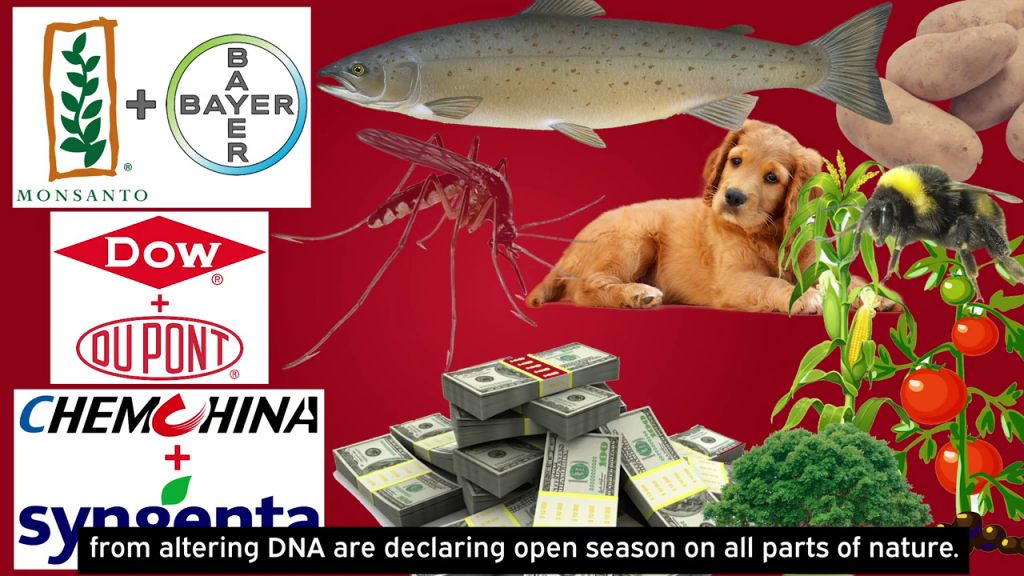
This dangerous new gene manipulation editing industry is known as “CRISPR” technology, which stands for Clustered Regularly-Interspaced Short Palindromic Repeats. The global market for CRISPR gene-editing products is predicted to reach more than $5 billion by 2025.
Already soybeans are being bred without the addition of trans fats to create “healthier” oil, non-browning lettuce has been developed that can be grown in warmer, drier climates, and mushrooms that won’t brown, disease resistant rice, carrots with more attractive shades, spicy tomatoes, potatoes that don’t bruise, and wheat with more fiber and less gluten.
“We’d like a piece of Wonder Bread to meet all your daily requirements of fiber,” Calyxt’s chief science officer told Wired.
Monsanto has invested $125 million in the gene-editing company Pairwise, which is creating sweeter strawberries, as well as gene-edited corn, soybeans, wheat, cotton and canola crops. They hope to avoid GMO health concerns with the new technology.
The most shocking application happened in China last year. Twin babies were born that had been gene edited when they were embryos, to eliminate a gene called CCR5 and make them resistant to HIV.
“Once the gate of gene-editing is wide open, the human race will be finished,” Shao Feng of the Chinese Academy of Sciences, told the South China Morning Post. “The technology is strong but the terrifying fact is that anyone slightly trained in a lab can perform it.”
Research now shows that the DNA changes Chinese scientist He Jiankui made may have significantly increased the twins’ risk of premature death. A new report concluded the scientist actually created “novel edits whose effects are not clear.”
Pioneering biochemist Jennifer Doudna, who co-developed CRISPR technology, fears it will be used to create designer people and spawn a new eugenics movement. In her book, “Crack in Creation,” Duodna writes that she has helped unleash a product that could be misused in catastrophic ways. Scientists could edit germline cells in human sperm, eggs, and embryos. These alterations would be passed down to children and subsequent generations, with unpredictable consequences. “When it comes to CRISPR the possibilities of this new technology – good and bad – are limited only by our imaginations,” says Doudna. “With today’s tools, anyone can set up a CRISPR lab for just $2,000.”
And then there’s Bill Gates’ mad plan to eradicate all malaria carrying mosquitoes across Africa using gene editing technology. What could go wrong right?
“This is the first time we’ve shown that we can, in principle, manipulate the fate of an entire species,” reported Andrea Crisanti of London’s Imperial College, whose work is supported by Gates. The first gene-drive gene-editing technique mosquitoes will be ready by 2026.
And how about the gene-edited, horn-less dairy cow that supposedly had no apparent side effects?
“Gene-edited cattle have a major screw-up in their DNA” announced a headline in MIT’s Technology Review. A routine data run found the cow had been cross-contaminated with antibiotic-resistant lab material.
“Things can go wrong that you don’t intend to happen, and they’re not always detected,” reported FDA scientist Heather Lombardi.
“The FDA reviewed the sequence of the DNA of these hornless cattle and published their findings that when the double-stranded DNA rejoined, it grabbed up some bacteria from the Petri dish that had been used during the process of genetic engineering,” Smith explains. “That bacteria had antibiotic-resistant genes that were resistant to three commonly used antibiotics. If these cattle were bred and released, and there was actually a plan in Brazil to do just that, it could have resulted in massive exposure to antibiotic-resistant diseases around the world.”
And also troubling – the U.S., Japanese, and Australian governments have all declared that CRISPR gene editing is safe and does not need regulating. In marked contrast the European Union has decided it needs oversight just like GMO crops.
With awareness of growing consumer distaste in the U.S. for GMO crops (and the extra pesticides that often accompany their use) the biotech industry realized they needed to shift focus to newer GMOs, i.e gene edited products that would not have the same fate.
“They created talking points and a network of influencers, and infiltration into government decision making and media,” Smith explains. “And they’re now trying to convince the world that gene editing should be considered breeding and therefore have no government oversight and no transparency, and no labeling.”
Companies are avoiding using terms like GMO and genetic engineering in reference to their gene-edited crops. Calyxt is calling the new technology “precision plant breeding” to generate “non-GMO” crops.
“Gene editing such as CRISPR has gotten so cheap and so easy that thousands of labs around the world can quite simply genetically engineer organisms,” says Smith. “Because some companies have made a lot of money there is a kind of gold rush or gene rush going on to introduce new gene edited organisms. And it’s not limited to just food, it includes bacteria for soil treatments and algae to create biofuels, and insects and animals, and flowers and trees, basically anything with DNA.
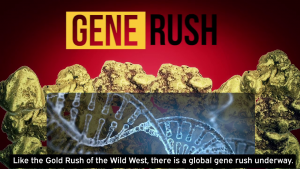
“One of the big problems with gene editing is its most consistent outcome is surprise side effects and it corrupts the gene pool in an irreversible way. If we do not curtail or slow down or stop the massive introduction of gene edited products we’re looking at the replacement of nature.
“Once genetically engineered gene-edited products are released, they can cross with non-GMOs and basically eliminate the non-GMO status of organic products. So you could be buying not just organic, but things that say non-GMO, and it might have products of these gene-edited organisms that have crossed with it. Gene-edited organisms could replace nature in this generation in a way that’s irreversible.”
Smith first became concerned about the health impacts of biotechnology in 1996 attending a lecture by genetic engineer Dr. John Fagen. “He blew the whistle. He explained that he was intimately knowledgeable of the technology and knew for sure it was not predictable and could create unpredicted side effects, and it was inappropriate to use in food or to release outdoors. In food it could create allergens, toxins and anti-nutrients, and if released outdoors it could reproduce and become a permanent part of the gene pool. Even the new GMOs today are not safe or predictable, and yet they are being released outdoors to permanently contaminate the gene pool.”
In 2000, it was Dr. Fagen who discovered that taco shells sold by Kraft Foods were made with genetically engineered corn that had not been approved for human consumption. The findings forced Kraft to recall millions of taco shells.
As exposed in leaked emails presented during Roundup lawsuits, the agro-biotech industry has worked overtime to suppress studies that question GMO safety and denounce activists like Smith, journalist Carey Gillam, and the nonprofit U.S. Right to Know.
Monsanto’s “Project Spruce” was specifically created to protect the company against all perceived threats to its business.
“Based on my research over 23 years and validated by ‘the Monsanto Papers’ that were released by the attorneys who filed lawsuits against Roundup causing cancer, we understand there is a disinformation campaign with front groups and scientists who have been caught red handed receiving money from Monsanto. And I’ve seen all over the world how regulatory agencies have been corrupted and infiltrated by the biotech industry such that the heavy bias has become institutionalized.
“A good example is Monsanto had a lapdog at the EPA in charge of the committee which ultimately said that glyphosate doesn’t cause cancer. They relied primarily on Monsanto’s research. And we also know that Monsanto is fully aware of the probable carcinogenicity of their product for decades and covered it up and dismissed expert opinions. We have plenty of evidence that Monsanto and other biotech companies and their supporters in government have been lying and have been exposing dangerous GMOs and associated chemicals to the environment for decades.”
Monsanto’s disregard for the health of people and the environment was just highlighted by the $10 million fine imposed for spraying a banned pesticide (highly toxic methyl parathion) in their Kihei GMO fields. The company was facing felony charges, but they used their influence to plead guilty to a reduced misdemeanor.
Why should we be concerned about eating GMO food?
“There’s a lot of evidence suggesting that GMOs and the Roundup sprayed on the GMOs is responsible for exacerbating many different diseases, from cancers to diabetes, to obesity and mental conditions,” says Smith. “We have thousands of people reporting they’re getting better when they switch to non-GMO, non glyphosate products. And we see similar reports relating to livestock and pets when they’re on non-GMO or organic diets. We have epidemiological evidence showing very tight correlations between diseases and the increased exposure to GMOs and Roundup. Any reasonable person would take the position that GMOs are not safe and should not be eaten.”
The mounting evidence against GMOs and Roundup has led many Americans to avoid these products. A Pew Research poll last year found that around half of Americans believe genetically modified foods are worse for one’s health than foods that are not genetically modified. And women are more inclined than men to believe that GMO foods will lead to health problems for the population as a whole.
“The overwhelming demand for non-GMO is forcing the food companies to systematically eliminate GMO ingredients,” notes Smith. “The U.S. market poses a big problem for the biotech industry and they’re focusing on flooding other countries with their products.”
At Smith’s Makawao talk he will discuss two GMO disasters – near catastrophes of genetically modified bacteria. “They could have radically altered weather patterns on the planet and rendered terrestrial plant life extinct. When you alter the genetic code in ways that we do not understand there’s an incredible capacity for harm.
“Studies show that genetically engineered salmon if released into the environment, the oceans, they could create a catastrophe for salmon populations. When you look at what could go wrong the possibilities are endless.
“There’s even a variety of gene editing that can produce gene drives,” he continues. “The offspring not only receive the new trait but they receive the genetic engineering equipment to then pass on to their offspring and the mechanism means that all offspring get the trait that you have genetically engineered.
“The goal of certain companies is to entirely wipe out certain species like mosquitoes carrying malaria and rats on certain islands. And yet there’s the possibility of horizontal gene transference to other species.”
An experimental trial by Oxitec to curb the spread of mosquito-borne diseases in Brazil by releasing genetically modified mosquitoes went haywire, with the unintended genetic contamination of the local population of mosquitoes, which was never supposed to happen. “They ended up with new types of mosquitoes with unknown characteristics that could be more likely to carry diseases,” Smith reports. “We don’t know because they have never existed in nature before.”
And what about Hawai’i’s fate?
“Unfortunately Hawai’i is a testing ground so if they released a genetically engineered bacteria or fungus or algae and the experiment goes bad it’s possible that the Hawaiians and the aina would be the primary recipient of those problems,” he says.
“When I was in Moloka’i some years ago I heard that some people who worked in the fields got very sick, but they were scared of losing their jobs so they refused to talk publicly about the problems. I heard about wildlife with mutations and skin problems. It’s an absolute catastrophe what’s going on in Hawaii and the new GMOs could be far worse.
“For example there’s a new type of GMO spray, a pesticide spray that sprays RNA interference, RNA molecules which will hook up with the similar sequence in an insect’s DNA and silence genes that are important to the insect’s survival so it kills the insect in the field. We know that RNA interference can work between species and kingdoms.
“A USDA scientist said essentially we have no capacity for safety testing this technology because of the ability for non-target effects. An EPA scientist published something similar about the sprays and both were ignored. With sprays if there’s drifts like what happened at the Waimea Middle School (on Kaua’i) we may be looking at changes in genetic expression that no one will be able to predict in advance and they may never link it to its cause. In order to identify a cause the change must be acute, fast and non-common. If it was not all three at the same time it could easily never be discovered.”
BTW for fans of the Impossible Burger which is available on Maui, Smith has this advice: “They took genes from the root of genetically engineered soy beans and they put it into yeast and created a leghemoglobin and at the same time they created 46 additional proteins that have never been part of the human food supply, that ended up in the fermentation vats into the burgers. None of the 46 proteins have been tested for safety. It’s another example of an irresponsible use of technology. ” https://www.latimes.com/business/la-fi-impossible-burger-fda-20170808-story.html
So what can we do as health conscious consumers facing this runaway GMO/CRISPR train?
One thing check out Smith’s website – https://protectnaturenow.com. “There’s a social media campaign and a link to other resources,” he explains. “The good news is when I started on the GMO issue in 1996 there was no other group talking about the health dangers. We have now a tipping point of consumer rejection in the United States. That was essentially building a movement around messaging related to the health dangers of GMOs. Now we’re creating a new movement.
“We’re at the dawn of a new movement where we have a planetary existential threat which is more dangerous than climate change. The horror story is partly a strength because it’s all true and it creates an alertness and alarm that is ultimately the basis of spreading a new movement that can start exerting pressure on regulatory agencies and international treaty organizations. We’re not just spreading doom and gloom, we’re building a movement to protect nature.”
Jeffrey Smith is a leading national expert on the dangers of Genetically Modified Organisms (GMOs) and their impact on agriculture and our health. He heads The Institute for Responsible Technology and wrote the seminal book “Seeds of Deception: Exposing Industry and Government Lies About the Safety of the Genetically Engineered Foods You’re Eating.” Smith produced the documentary “Genetic Roulette.”
p.s. If you want to search Jeffrey Smith online be careful of Google which has been censoring natural health web sites. I searched his name and out of the first 8 links, 4 were critical of him (by the pro-GMO lobby), compared with the DuckDuckGo search engine where out of the first 10 links only 1 was critical.





